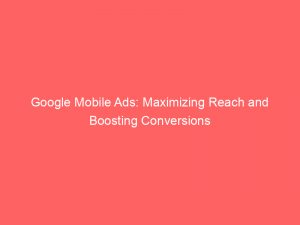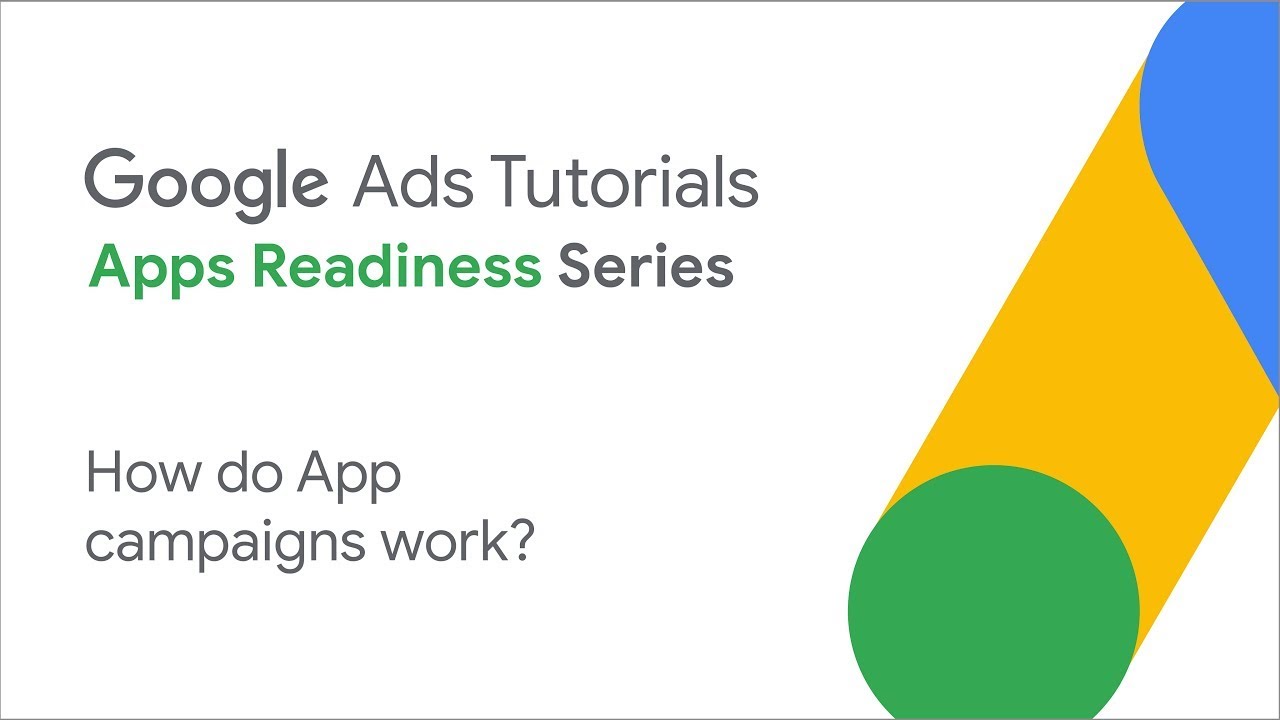In today’s digital age, our mobile devices have become our constant companions, allowing us to stay connected, entertained, and informed on the go. But have you ever wondered how those cleverly targeted ads manage to find their way onto our screens?
Enter GoogleMobile Ads, the powerhouse behind the advertisements that seamlessly blend into our mobile experience. From eye-catching banners to interactive videos, these ads have the power to captivate and persuade.
But with the COVID-19 pandemic throwing the world into chaos, will our beloved mobile ads feel the impact too? Let’s delve into the world of Google Mobile Ads and uncover the fascinating story that lies beneath the surface.
Table of Contents
- google mobile ads
- 1. Definition Of “Mobile” In Google Ads
- 2. Types Of Mobile Ads
- 3. Mobile Ads For Tablets And Mobile Phones
- 4. Platforms And Apps Where Mobile Ads Appear
- 5. Various Formats Of Mobile Ads
- 6. Calculating Potential Earnings With AdMob
- 7. Factors Affecting Potential Revenue
- 8. Impact Of Covid-19 On Expected Revenue
googlemobileads
Google mobile ads encompass various types of advertisements that can appear on mobile devices, such as smartphones and tablets. These ads are specifically designed for mobile platforms and can be displayed on mobile search results, mobile-optimized websites, YouTube, and other mobile apps.
The format of mobile ads can vary and include text, image, video, call-only, or app/digital content. AdMob, which is a mobile advertising platform owned by Google, offers users the ability to estimate their potential earnings based on factors like app usage, location, and content category.
However, it is important to note that the displayed revenue is only an estimate and can be influenced by factors such as advertiser demand, user location, device, content vertical, seasonality, ad size, currency exchange rates, country, and operating system regulations. Additionally, the ongoing COVID-19 pandemic may impact the expected revenue, potentially reducing it.Key Points:
- Google mobile ads are advertisements specifically designed for mobile devices like smartphones and tablets.
- These ads can appear on mobile search results, mobile-optimized websites, YouTube, and other mobile apps.
- Mobile ads can take different formats including text, image, video, call-only, or app/digital content.
- AdMob, Google’s mobile advertising platform, allows users to estimate potential earnings based on factors like app usage, location, and content category.
- The displayed revenue in AdMob is an estimate and can be influenced by various factors including advertiser demand, user location, device, content vertical, seasonality, ad size, currency exchange rates, country, and operating system regulations.
- The ongoing COVID-19 pandemic may impact expected revenue and potentially reduce it.
Sources
https://support.google.com/google-ads/answer/2393039?hl=en
https://admob.google.com/home/
https://pub.dev/packages/google_mobile_ads
https://ads.google.com/intl/en_us/home/tools/mobile-app/
Check this out:
💡 Pro Tips:
1. Optimize your mobile ad campaigns for specific devices: Since mobile ads can be specifically created for tablets or mobile phones, it’s important to ensure that you are optimizing your campaigns based on the type of device you’re targeting. Consider the user experience on different devices and tailor your ads accordingly.
2. Utilize call-only ads for greater mobile engagement: Call-only ads are a type of mobile ad that is designed to encourage users to directly call your business. This can be particularly effective for businesses that rely on phone calls for conversions. Make sure to use call extensions and create compelling ad copy that prompts users to take action.
3. Leverage YouTube for mobile advertising: In addition to appearing on mobile search results and mobile-optimized websites, mobile ads can also be displayed on YouTube. This presents an opportunity to reach a wide audience and engage users through video ads. Consider creating engaging and visually appealing video content to capture users’ attention on YouTube.
4. Optimize your mobile ad formats: Mobile ads can come in various formats, including text, image, video, call-only, or app/digital content. Test different formats to see which ones resonate best with your target audience. Consider the context in which users will see your ad and choose the format that is most likely to capture their attention and drive conversions.
5. Stay informed about industry trends and modifications: The mobile advertising landscape is constantly evolving, and it’s important to stay up to date with the latest industry trends and modifications. This includes keeping track of changes in user behavior, technological advancements, and updates to advertising platforms. By staying informed, you can adapt your mobile ad strategies to maximize their effectiveness and stay ahead of the competition.
1. Definition Of “Mobile” In Google Ads
Mobile ads play a crucial role in the digital advertising landscape today.
When it comes to Google Ads, the term “mobile” refers to the placement of ads on mobile devices, including smartphones. This means that mobile ads can appear on webpages and apps that are viewed on mobile devices like cell phones and tablets.
With the ever-increasing usage of smartphones, targeting mobile ads has become an essential strategy for businesses to connect with their target audience.
2. Types Of Mobile Ads
In order to cater to different advertising needs, Google Ads offers various types of mobile ads.
These include call-only ads and app promotion ads. Call-only ads are specifically designed to encourage users to make a phone call directly from the ad.
This is particularly useful for businesses that rely on phone leads for conversions. On the other hand, app promotion ads are aimed at driving app installs and engagement by directing users to download or interact with a particular app.
3. Mobile Ads For Tablets And Mobile Phones
Another important aspect of mobile ads is that they can be specifically tailored for tablets or mobile phones.
This allows advertisers to create ads that align with the specific screen sizes and functionalities of these devices. By optimizing the ads for different mobile devices, businesses can provide a seamless user experience, resulting in higher engagement and conversion rates.
4. Platforms And Apps Where Mobile Ads Appear
Google mobile ads have a wide reach across various platforms and apps.
These ads can appear on mobile search results, mobile-optimized websites, YouTube, and other mobile apps. This extensive network allows advertisers to connect with their target audience at various touchpoints throughout the user’s mobile experience.
Whether users are searching for information, watching videos, or engaging with mobile apps, businesses can reach their potential customers effectively through Google mobile ads.
5. Various Formats Of Mobile Ads
Mobile ads come in different formats to cater to the diverse needs of advertisers.
Ad formats can include text, image, video, call-only, or app/digital content. Text ads are simple and effective, displaying a concise message to capture the user’s attention.
Image and video ads offer more visually engaging experiences, enabling businesses to showcase their products or services in a compelling way. Meanwhile, call-only ads are designed to encourage users to take immediate action by making a phone call.
App/digital content ads provide businesses an opportunity to promote specific apps or digital content to drive downloads and engagement.
6. Calculating Potential Earnings With AdMob
AdMob, a mobile advertising platform owned by Google, offers users the ability to calculate potential earnings based on various factors such as app usage, location, and content category.
This calculation is primarily based on the number of times the app is opened and viewed by human visitors per month, referred to as monthly active users. By leveraging AdMob’s tools and insights, developers and app owners can estimate their potential annual revenue, allowing them to make informed decisions about their mobile ad strategy.
7. Factors Affecting Potential Revenue
While calculating potential earnings with AdMob provides valuable insights, it is important to consider several factors that can affect the actual revenue generated.
These factors include advertiser demand, user location, device, content vertical, seasonality, ad size, currency exchange rates, country, and operating system regulations. Each of these elements influences advertiser budgets, user engagement, and the overall effectiveness of mobile ad campaigns.
Advertisers must analyze and optimize these factors to maximize their revenue potential.
8. Impact Of Covid-19 On Expected Revenue
The outbreak of the COVID-19 pandemic has had a significant impact on various industries, including the mobile advertising sector.
The expected revenue from mobile ads may have been affected, potentially leading to a reduction in earnings. As consumer behavior changes and markets experience uncertainty, it is essential for businesses to reassess their mobile ad strategies, adapt to the evolving landscape, and explore new opportunities to reach and engage their target audience effectively.
This post updated with new ad network performance data.
In conclusion, Google mobile ads provide businesses with a powerful way to maximize reach and boost conversions. With the ability to appear on webpages and apps viewed on mobile devices, mobile ads offer advertisers the opportunity to connect with their target audience directly.
By utilizing various ad formats and platforms, businesses can create personalized and compelling experiences, driving engagement and achieving their advertising goals. Furthermore, AdMob empowers developers and app owners with the tools to calculate potential earnings and make informed decisions.
However, it is crucial to consider the factors that influence revenue and adapt to the ever-changing landscape, such as the impact of the COVID-19 pandemic. By staying informed and proactive, businesses can navigate the world of mobile advertising successfully and achieve optimal results.
Performance Marketing Tips • Buy Traffic • Programmatic Advertising • Self-Serve DSP Platform












